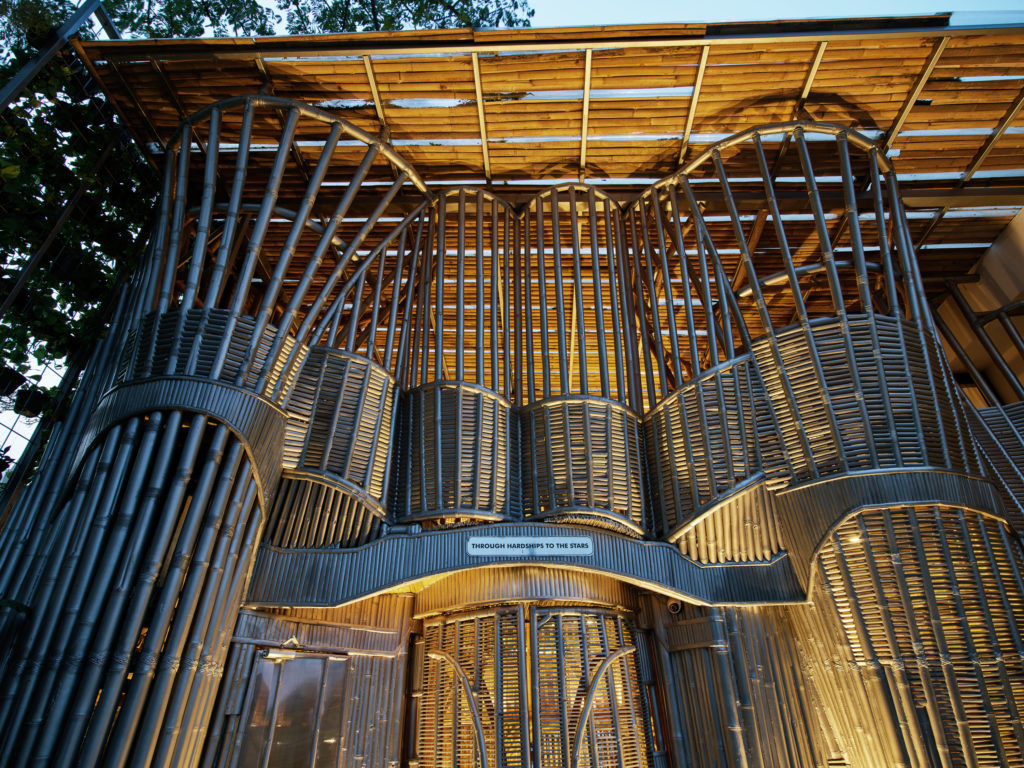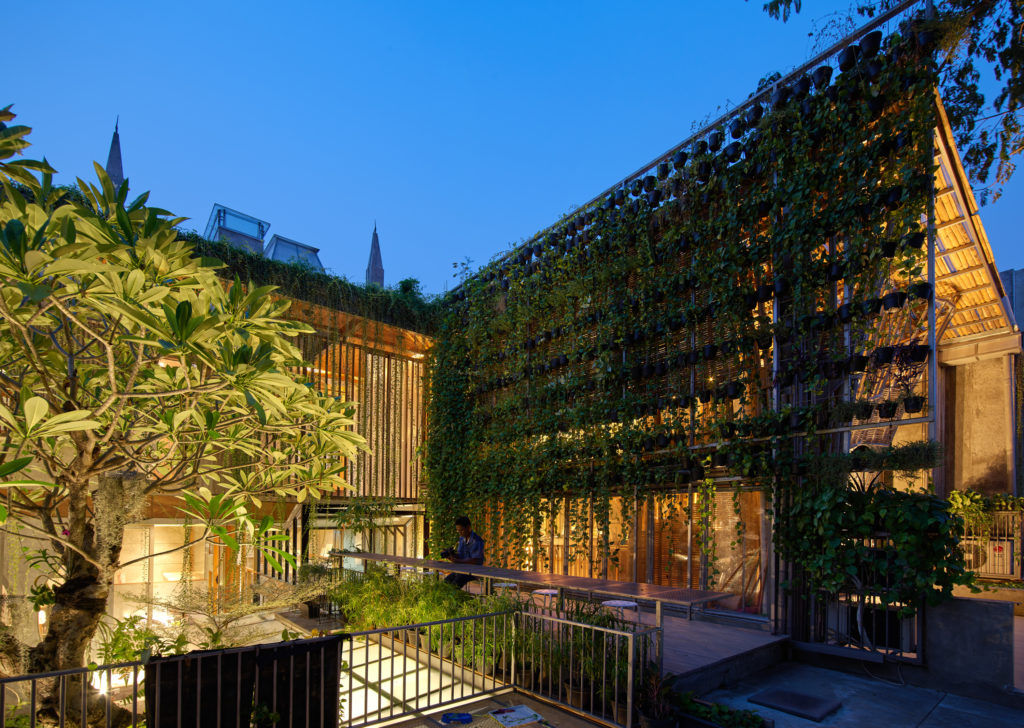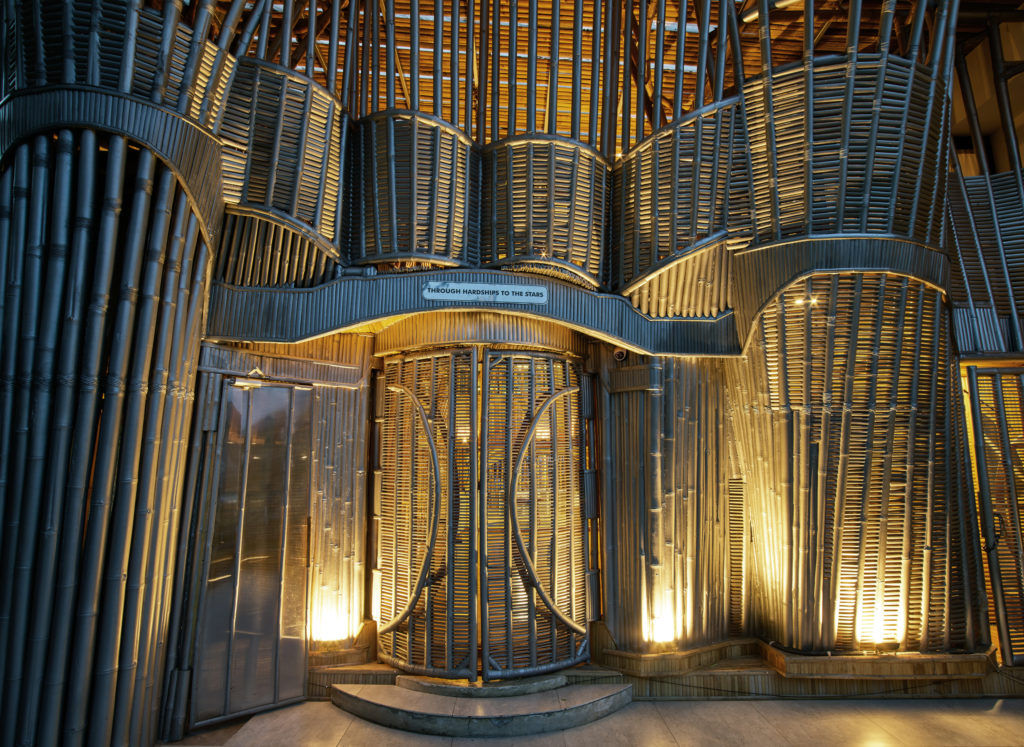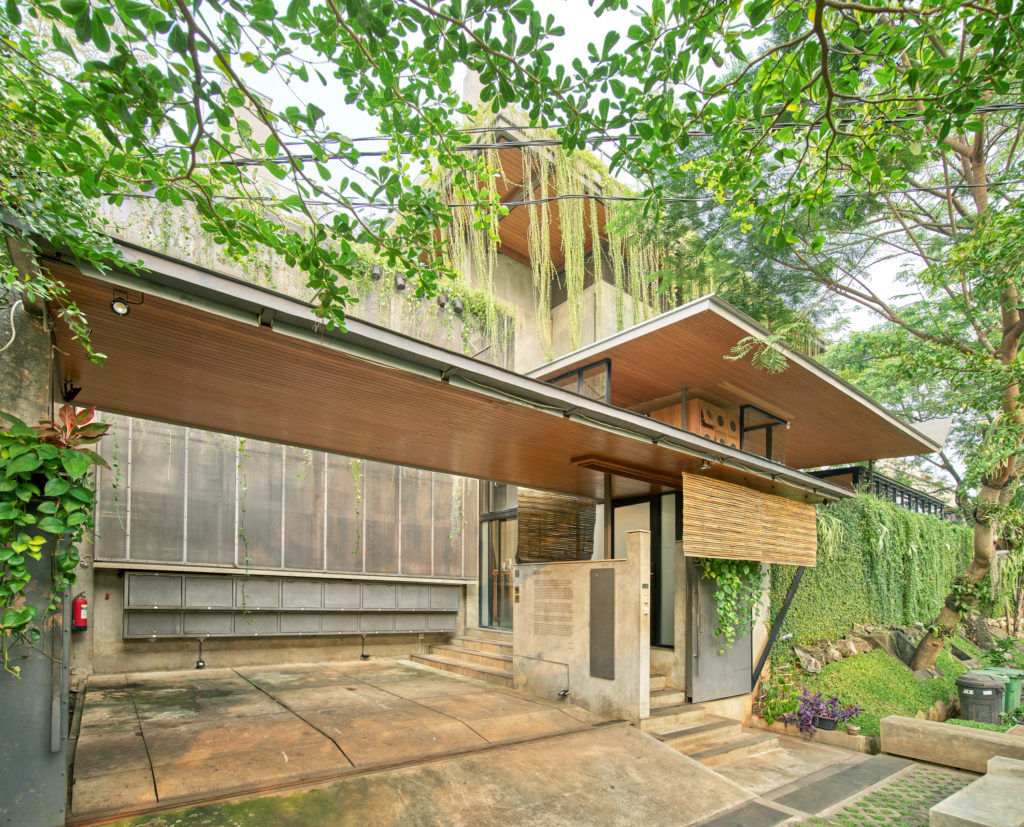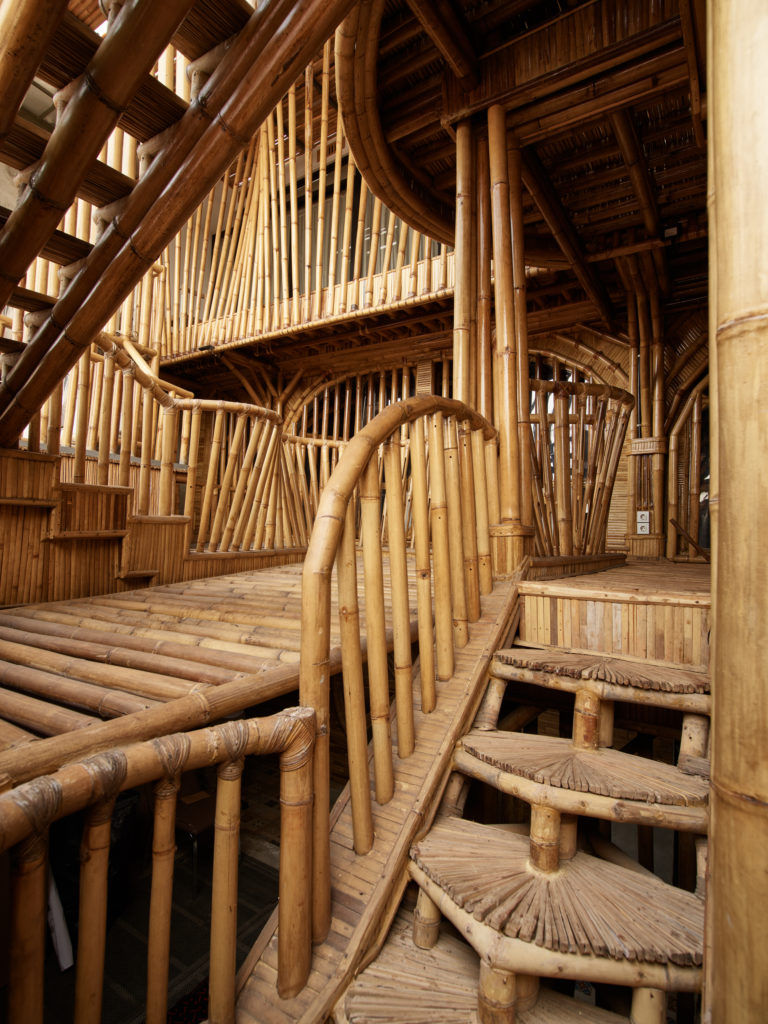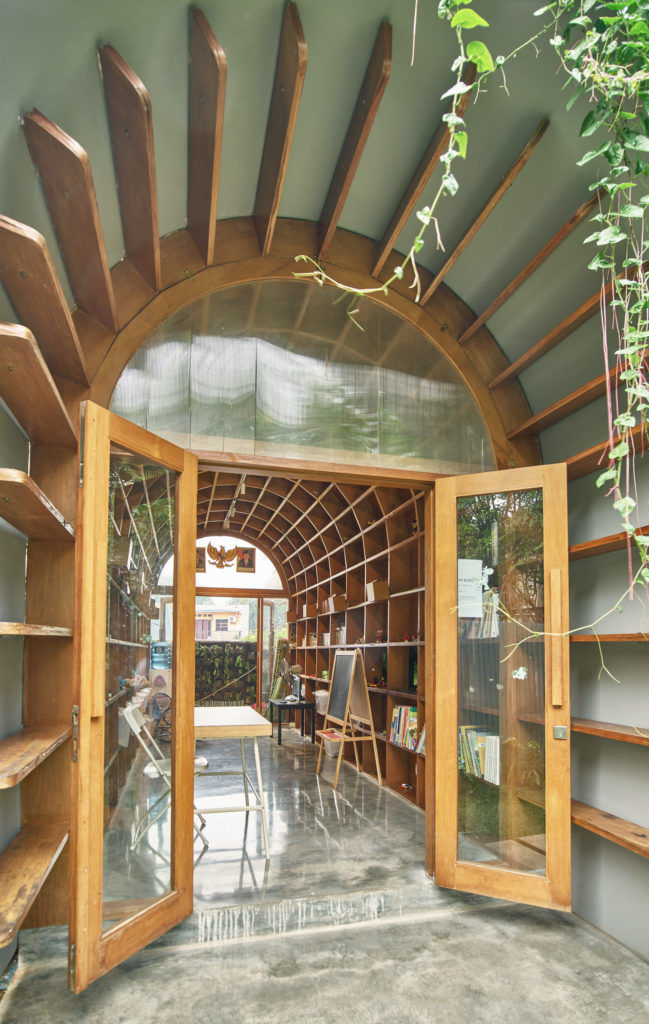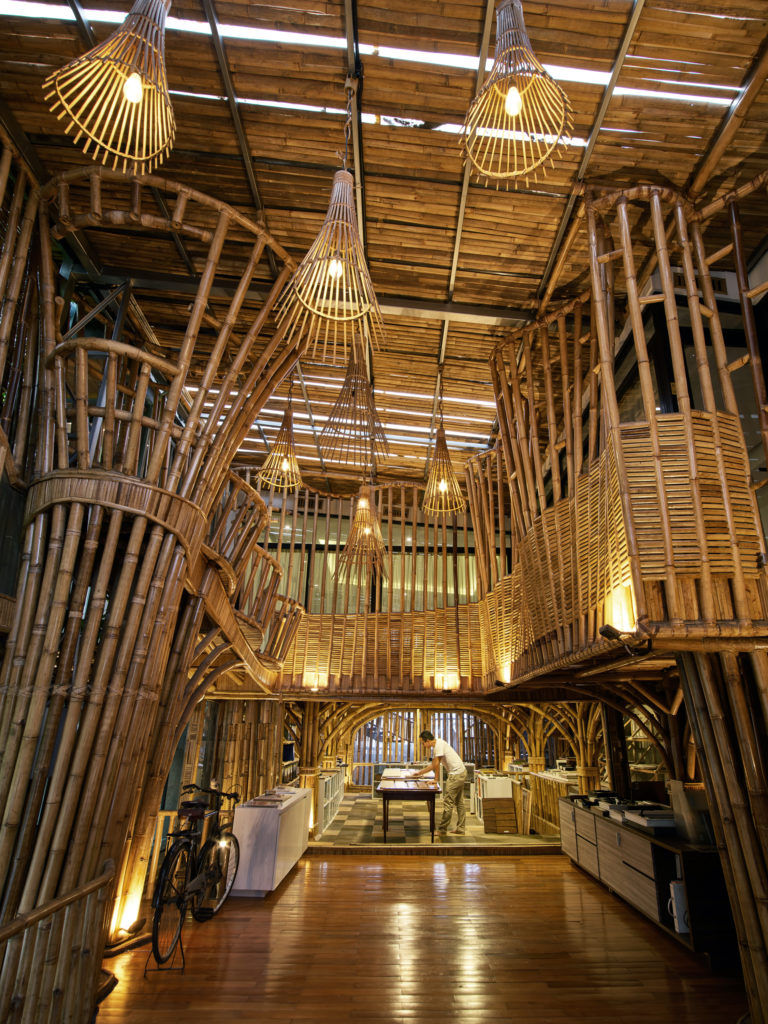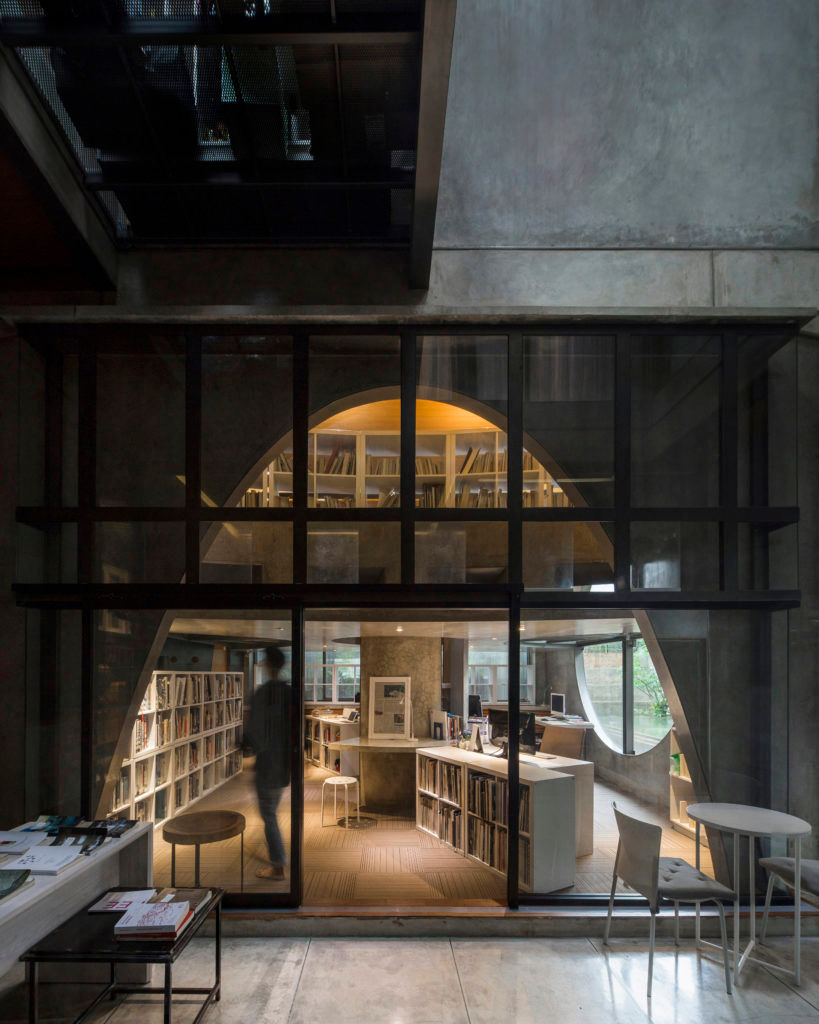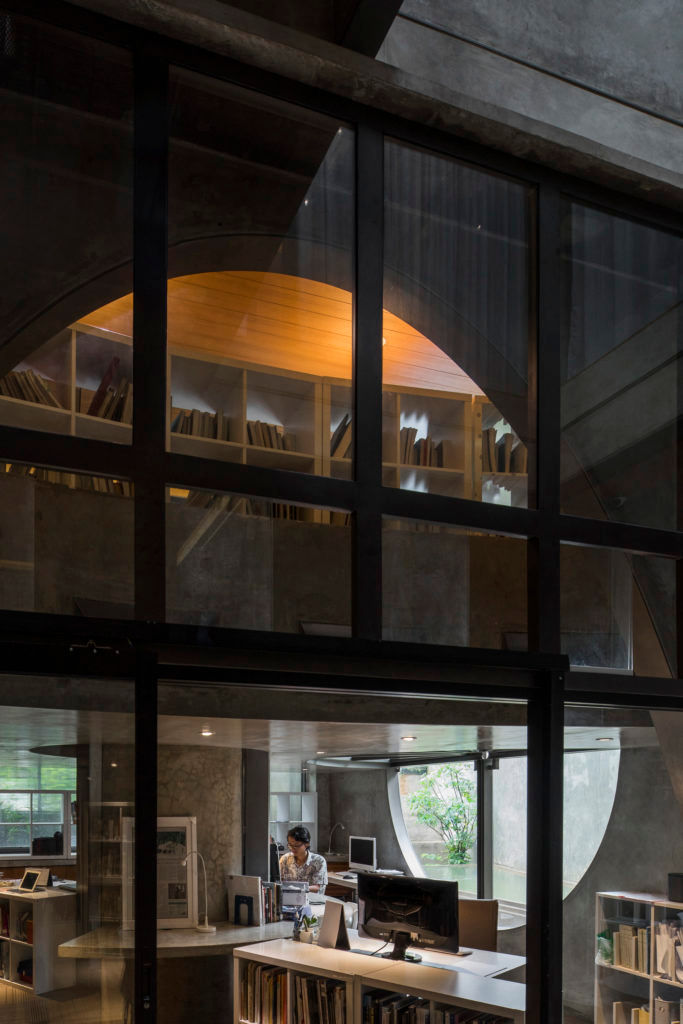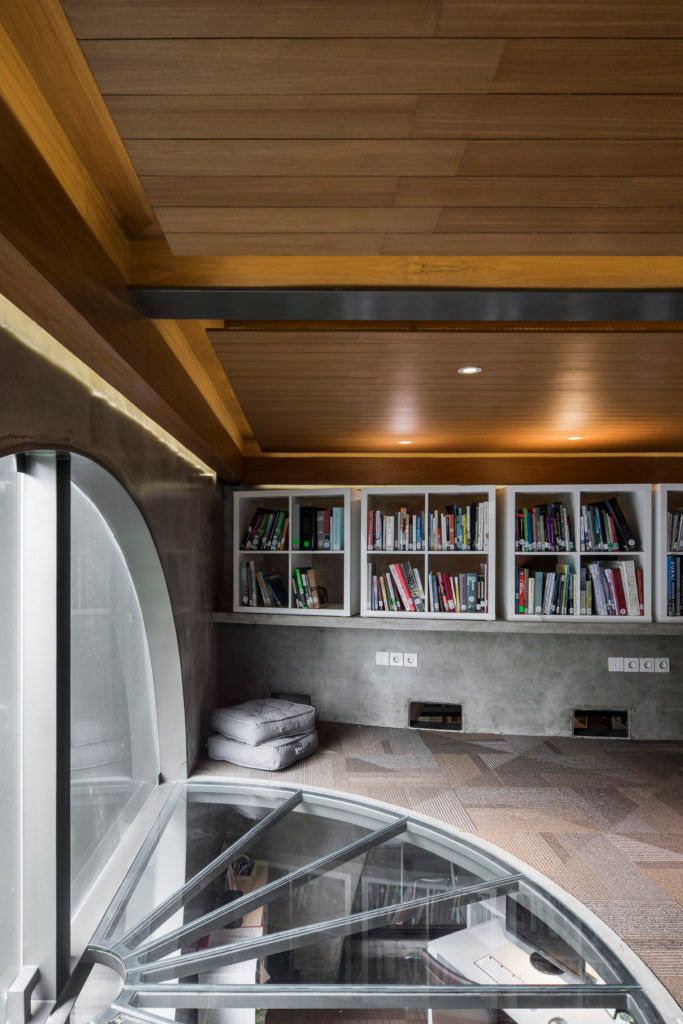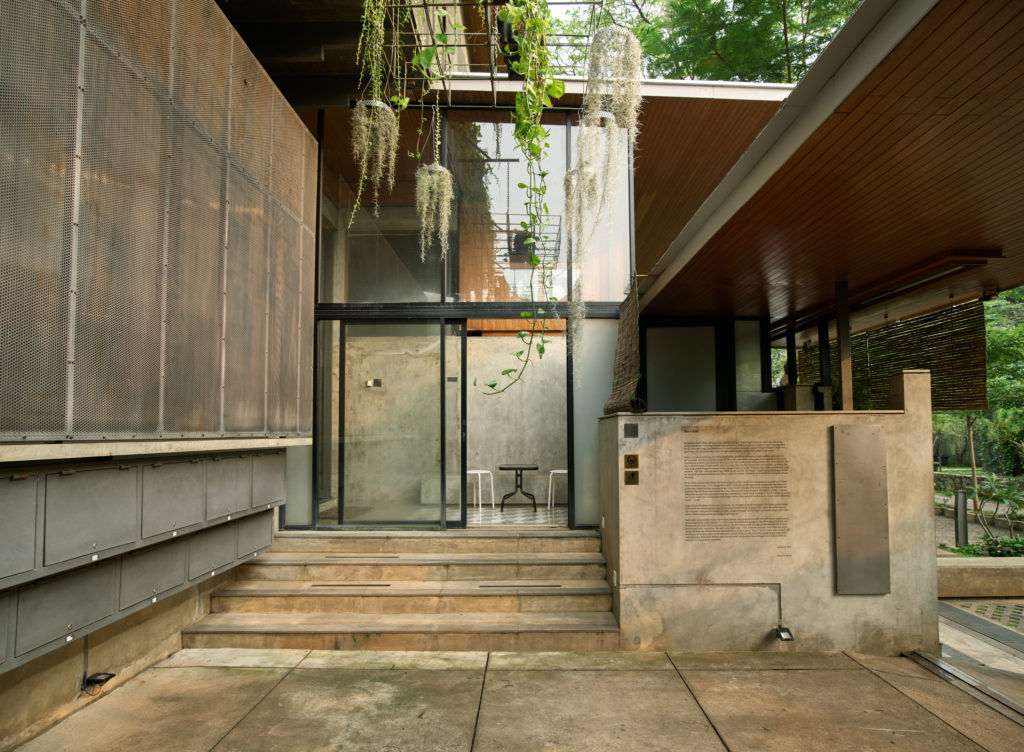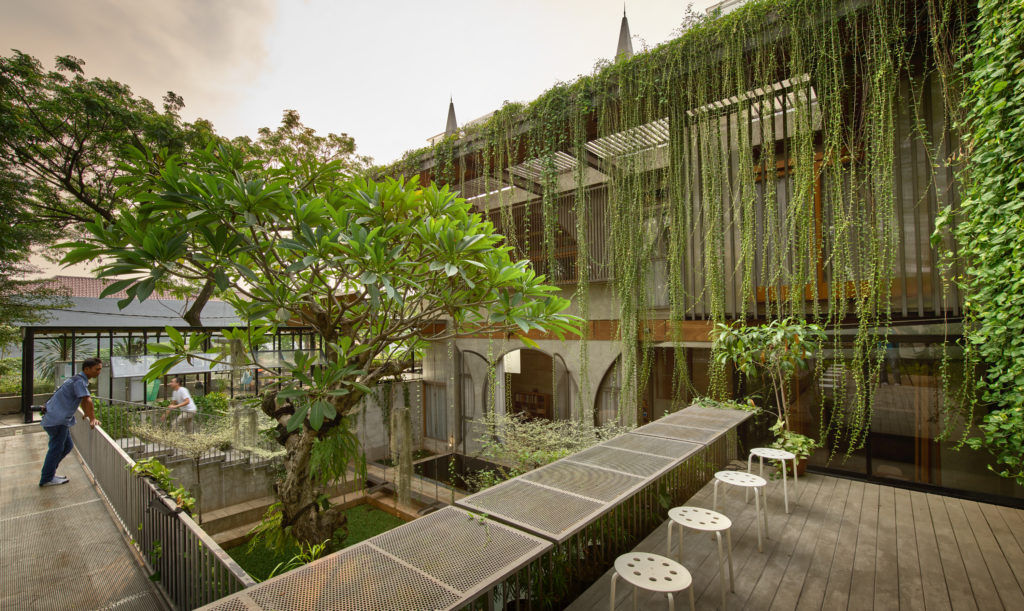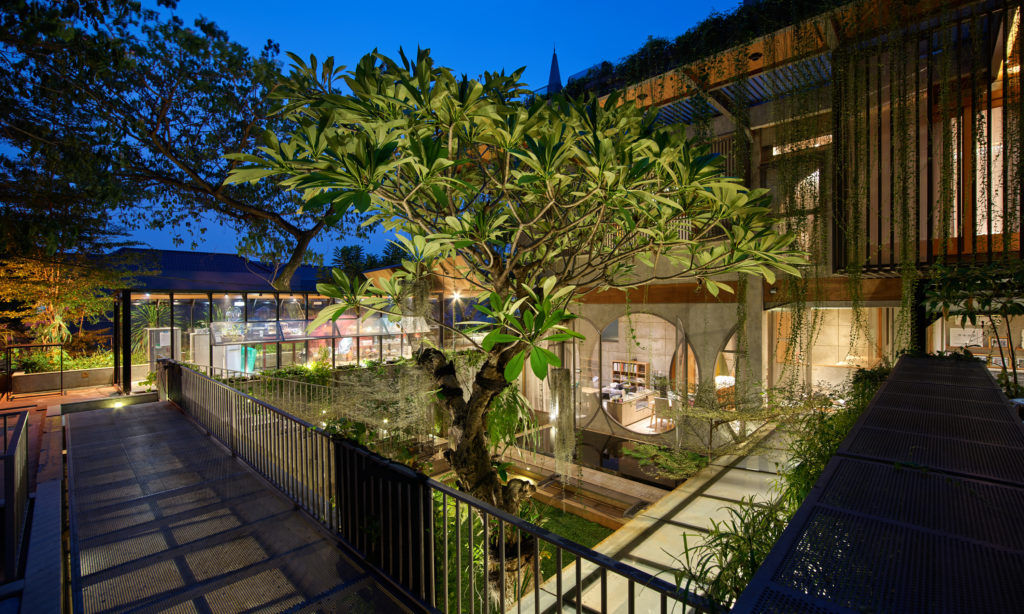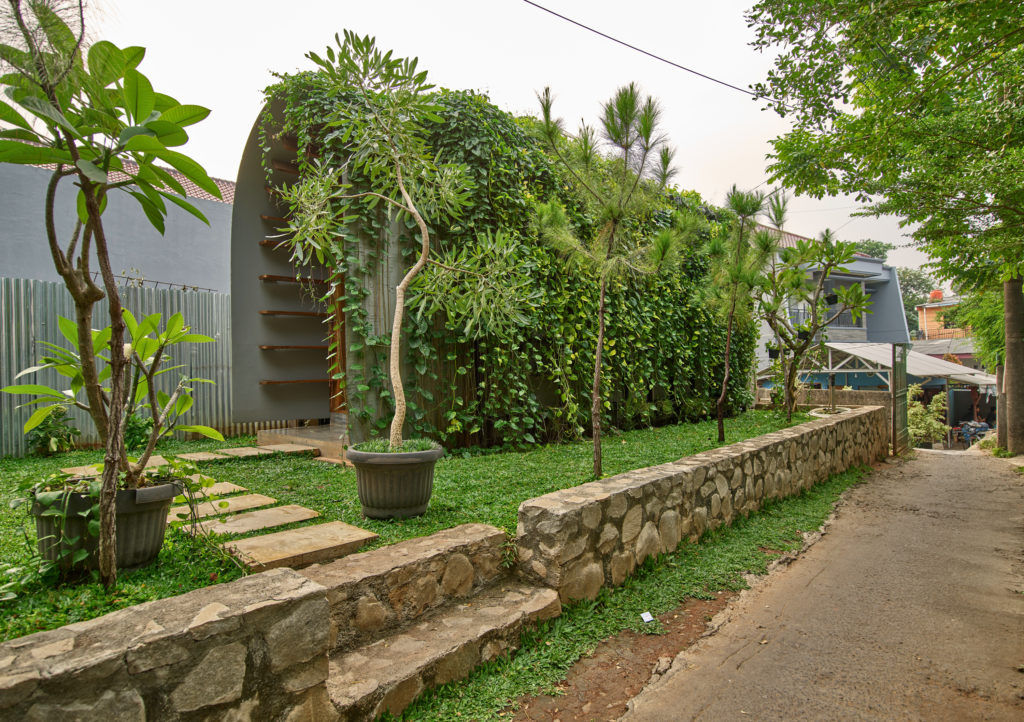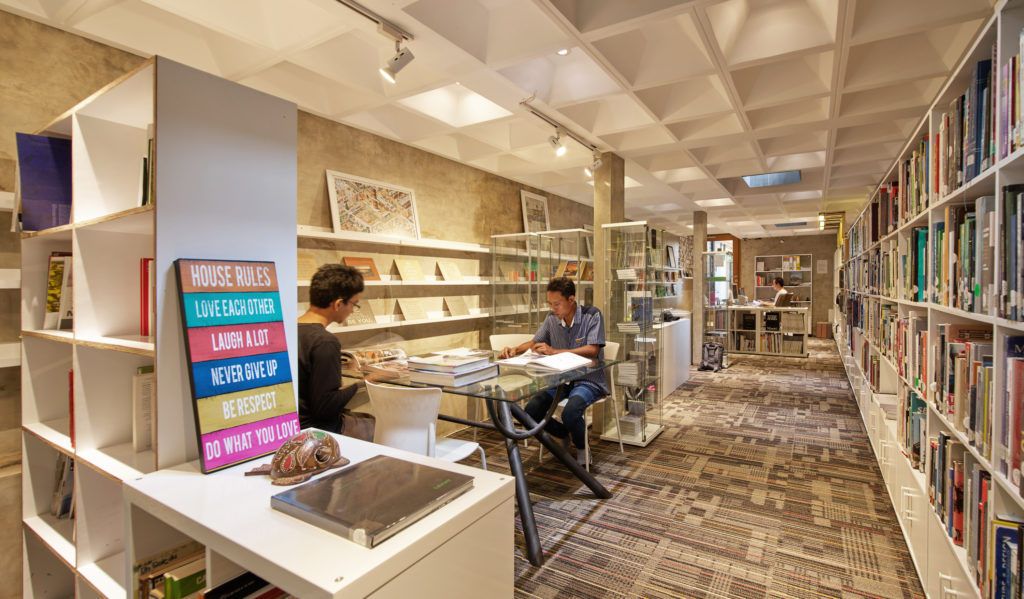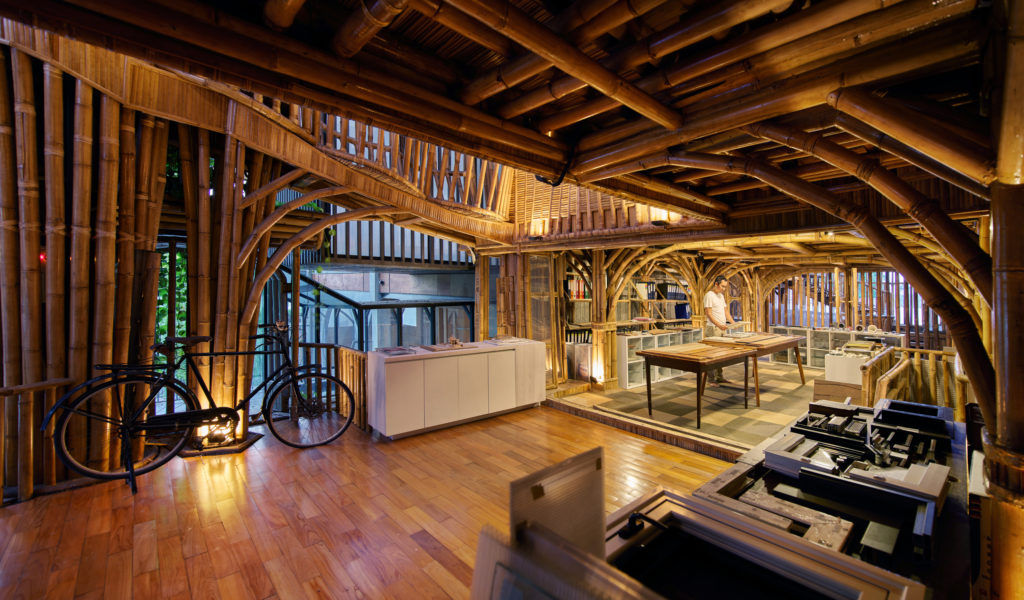The ‘Guha’ in Jakarta, integratively designed and developed as a new plus renovation project houses a dental clinic, residence, (Omah) library and Guha Bambu which is the studio of Realrich Sjarief / RAW Architecture. The Guha project located in the Taman Villa Meruya positively challenges the typical Indonesian housing concepts with that of a hybrid model wherein a house could possibly also extend towards including spaces and facilities for micro-business programs. While ideating such models, the example of Guha also strives to consciously maintain privacy and access to the public.
RAW Architecture has deployed an earth-loving prototype through the construction of Guha along with the local craftsmen belonging to multiple generations from West Java. They artistically combined the use of bamboo material through the ceremonial fish mouth joint construction along with the newer materials like steel and concrete. The construction of Guha enabled its makers to gain knowledge about combined design explorations using natural fibre composite materials with industrial materials. Few spaces even exercise ‘Tumpang Sari’ – which is an indigenous construction method attached to the Javanese community, wherein openings are created near the tip of chimney-like volumes to produce stack effect, to thereby easing out the process of hot air removal.
The making of ‘Guha’ is particularized into 9 construction materials namely steel, wood, glass, metal, gypsum, bamboo, plastic, stone and concrete to then be able to encapsulate the experimentation of craftsmanship in Realrich Architecture Workshop. And the most interesting material as depicted in Guha is the use of bamboo as it contains a quality of discovery and uncertainty. Bamboo establishments were pervasive in the country of Indonesia before the spread of bubonic plague caused by rats. Therefore the varying tubular cross-section sizes that could lead to incomplete details which then ultimately provided space for rats to occupy was studied and considered highly. Secondly, the deficiency of standardised supply and technology of bamboo preservation also contributed to an important parameter during construction.
Consequently, in the Guha project, these risks associated with bamboo are eliminated by the provision of a threshold barrier for transitional spaces while also closing the gap with construction glue. Further, these components of bamboo can easily and efficiently form curved structures inviting a lot of new possibilities.
The ‘Omah Library’- which is part of the renovation project mainly consisted of adding sequence for additional elaborated programs such as extended spaces for bookshelves and gallery. Meanwhile, the ‘Guha Bambu’- which is the new project located at the east side of the building – comprised a 3 level bamboo structure along with a 2 level basement structure. The circulation is thereby designed to separate the public and private spaces through a differentiating access at the entrance. The designed front view of ‘Guha Bambu’ has been inspired from the ‘Barong’ mask which resembles the face of a tiger (seen as a king of the symbol of goodness), along with the overall theme of the interiors generating the perception of a twisting bamboo forest. The methodology to fabricate the structure is derived from the experimental thought of an alfa-omega project, whereby the separation of steel plane truss structure (as the roof) and bamboo structure to hold the 3-floor plates (under the steel-structure roof) had been devised. Additionally, the spread-out pillars support the floors and screens made from split bamboo pieces that are used to divide the spatial setting.
The ‘Guha’ involves a flexible and open layout that attempts to orate the tropical climate principles that unfold the north and south directions while restricting the west side facade. Materials used in the facade are very minimal as they only include concrete, vertical louvres made out of steel and bamboo.
Carrying the idea of forming a park that is uncomplicated, the different landscaping interventions primarily included growing a combination of local and wild plants such as weeds, frangipani trees and grass which thereby formulated a microclimate. This also resulted in the deduction of ambient temperature while setting up the beautiful environment, along with its rainwater catchments and reservoirs. The bamboo cave building has changed its appearance twice with respect to the change in seasons, whereby the first colour showed up in golden while the second time it unveiled the colour of a mature bamboo vein. Furthermore, over a period of time, varieties of medicinal plants and vines provided insulation and shade.
RAW Architecture as a design firm, continuing the craftsmanship technique of 3 generations (started by the builder family of Realrich Sjarief) has therefore displayed a concept of “integrative approach” lying somewhere between a series of poetic architectural details, made possible by providing both functional and artistic details. The ‘Guha’ project has undoubtedly looked into both the ‘built’ and ‘unbuilt’ which has resulted in the overall symphony and organic growth of the various designed spaces. The technique elaborated in the Realrich Architecture Workshop is the studies of context, application of tectonics grammar, evaluation of critical methodology grammar, and uses of stereotomic forms. The sum of all of these concepts thereby calls for the objective of the studio to achieve a natural state of architectural mastery.
Factfile-
- Project: Guha Project
- Architects: RAW Architecture, Indonesia
- Location: Jakarta
- Text: Nikitha Sunil | Contributor at A+D

